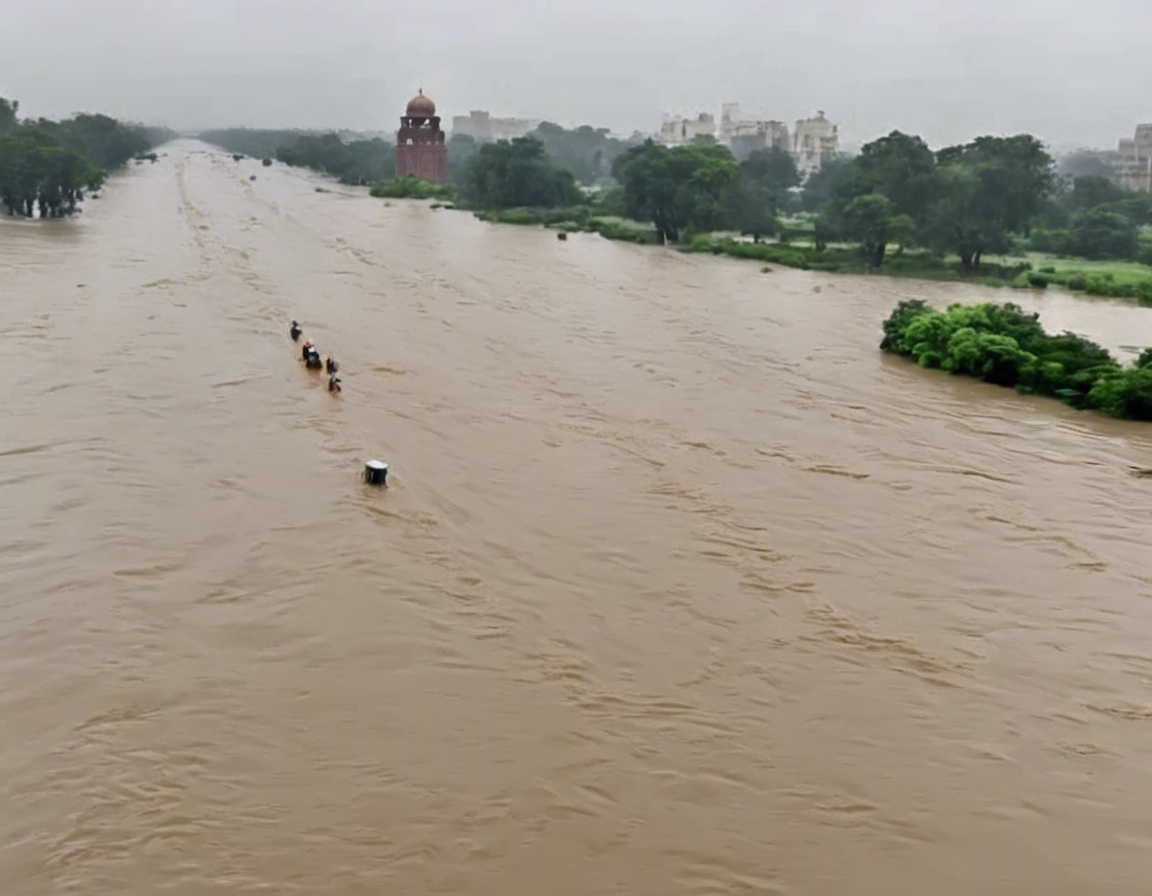With the onset of the monsoon season, the city of Delhi is once again bracing itself for potential flooding incidents. Delhi, the capital of India, is no stranger to waterlogging and inundation during the annual monsoon period, which generally extends from June to September. These floods are primarily the result of heavy rainfall, inadequate drainage systems, encroachment of water bodies, and unplanned urbanization. In recent years, the city has witnessed an increase in the frequency and intensity of these floods, causing immense disruption to daily life and infrastructure.
Current Situation
The recent downpour in Delhi has led to waterlogging in several low-lying areas, disrupting traffic, damaging property, and causing inconvenience to residents. Areas like South Extension, Minto Bridge, ITO, and areas around the Yamuna river have reported waterlogging, with images and videos circulating on social media platforms showing the extent of the flooding. The emergency services are on high alert, and authorities are working round the clock to pump out water and ensure the safety of residents.
Causes of Floods in Delhi
-
Inadequate Drainage Systems: One of the primary reasons for flooding in Delhi is the insufficient drainage infrastructure. The city’s drainage systems are often clogged with waste and unable to handle the excess water during heavy rains.
-
Encroachment of Water Bodies: Over the years, many water bodies in Delhi have been encroached upon for developmental activities, leading to reduced natural drainage and storage capacities.
-
Unplanned Urbanization: The rapid and unplanned growth of the city has resulted in the concretization of large areas, leaving little space for rainwater to percolate into the ground.
-
Lack of Maintenance: The maintenance of stormwater drains and sewage systems is often neglected, exacerbating the problem of waterlogging in the city.
Impact of Floods
The floods in Delhi have a cascading impact on various aspects of life in the city:
-
Traffic Disruption: Waterlogged roads lead to traffic jams, delays, and potential accidents, affecting the daily commute of thousands of residents.
-
Health Concerns: Stagnant water serves as a breeding ground for mosquitoes and waterborne diseases, posing a health risk to the population.
-
Damage to Property: Floodwaters can damage houses, vehicles, and infrastructure, leading to financial losses for individuals and the government.
-
Disruption of Services: Schools, offices, and public services may be disrupted due to heavy flooding, causing inconvenience to the residents.
Measures to Mitigate Floods
To address the recurring issue of floods in Delhi, authorities have been taking various measures to mitigate the impact and prevent future incidents:
-
Improving Drainage Systems: Upgrading the city’s drainage infrastructure and ensuring regular maintenance of stormwater drains to enhance water flow and reduce waterlogging.
-
Desilting Drains: Regular desilting of drains to remove accumulated silt and debris that hinder the flow of water during the monsoon season.
-
Rainwater Harvesting: Encouraging rainwater harvesting in residential and commercial buildings to reduce the reliance on municipal water supply and promote groundwater recharge.
-
Flood Preparedness: Enhancing the city’s preparedness for floods through early warning systems, disaster management training, and coordination among various agencies.
Future Challenges
Despite these efforts, Delhi continues to face challenges in managing floods, with climate change exacerbating the intensity and frequency of extreme weather events. The city’s vulnerability to flooding highlights the need for a holistic approach towards urban planning, water management, and climate resilience. Sustainable solutions that prioritize water conservation, green infrastructure, and community engagement are essential for building a flood-resilient Delhi.
FAQs
Q: How does climate change contribute to flooding in Delhi?
A: Climate change leads to erratic rainfall patterns and intense rainfall events, increasing the likelihood of floods in urban areas like Delhi.
Q: What role can citizens play in mitigating floods in Delhi?
A: Citizens can contribute by properly disposing of waste, avoiding encroachment of water bodies, and adopting rainwater harvesting practices.
Q: Are there any long-term solutions to prevent floods in Delhi?
A: Long-term solutions include sustainable urban planning, restoring water bodies, and investing in resilient infrastructure to mitigate floods effectively.
Q: How does waterlogging impact the economy of Delhi?
A: Waterlogging disrupts businesses, transportation, and daily activities, leading to economic losses due to delays and damages.
Q: What can authorities do to improve flood management in Delhi?
A: Authorities can invest in modern drainage systems, promote green infrastructure, and involve communities in flood preparedness and response plans.
In conclusion, addressing the challenges of flooding in Delhi requires a multi-faceted approach that integrates engineering solutions, policy interventions, citizen engagement, and climate adaptation strategies. As the city grapples with the immediate impacts of the monsoon floods, it is crucial to prioritize long-term resilience building to create a sustainable and liveable urban environment for all residents.
